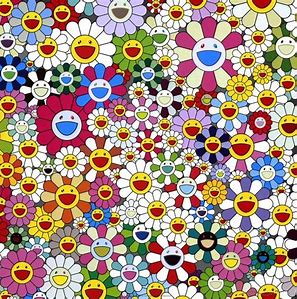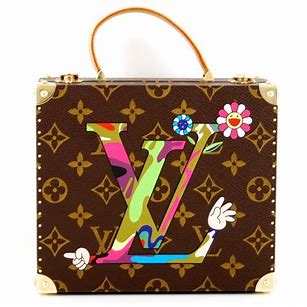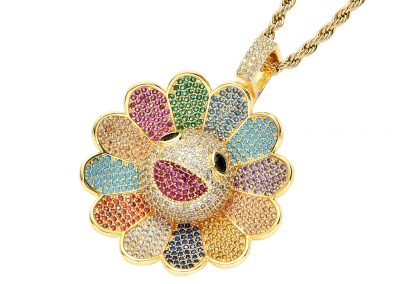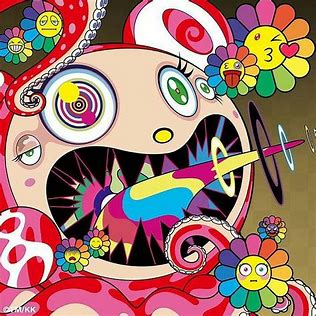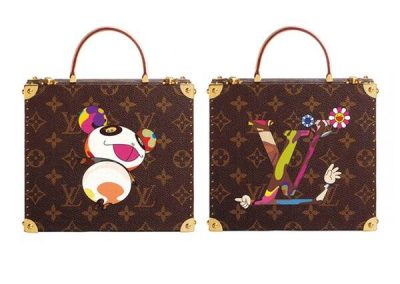It was the first time these images were shown in London and little could the visitor imagine how popular they would become all over the world and what an impact they would create on pop culture and product design from that day onwards.
Known for his brightly coloured and maniacally cheerful works, Takashi Murakami’s astronomical rise to fame in the contemporary art world has been met with equal parts celebration and criticism. Murakami merges Japanese pop culture referents with the country’s rich artistic legacy, effectively obliterating any distinction between commodity and high art. He is compared to Andy Warhol for his art-as-business approach, as well as for his large factories of workers who produce, market, and sell his art. His critics have derided him as a sell-out, and as playing into the art market’s increasing demands for easily consumable and exotic art from Japan. But for Murakami, this is a compliment and precisely what he intends. His work draws inspiration from the Japanese subculture of otaku, which is replete with strange perversions of cuteness and innocence, as well as incredible violence. Through this, Murakami crafts a subtle critique of Japan’s contemporary culture as well as the West’s intruding influence upon it.
Taking cue from Andy Warhol’s factory, Murakami developed a new form of Pop art, aptly titled Neo-Pop, in which the line between pop culture and high art was not simply blurred, but rather, completely obliterated. Murakami’s Neo-Pop parodies postwar Japanese consumer culture by “sampling” and “remixing” its themes and characters within the realm of high art. Murakami’s factories produce fine art that sells for millions of dollars alongside cheap trinkets that sell for just a few dollars. In this respect, Murakami shatters the illusion of elitism and superiority of the art world, while simultaneously benefitting from it economically. His collaboration with Louis Vuitton further destroyed the line between art and commerce, while the wide availability of his trinkets enable anyone to own a Murakami piece.

